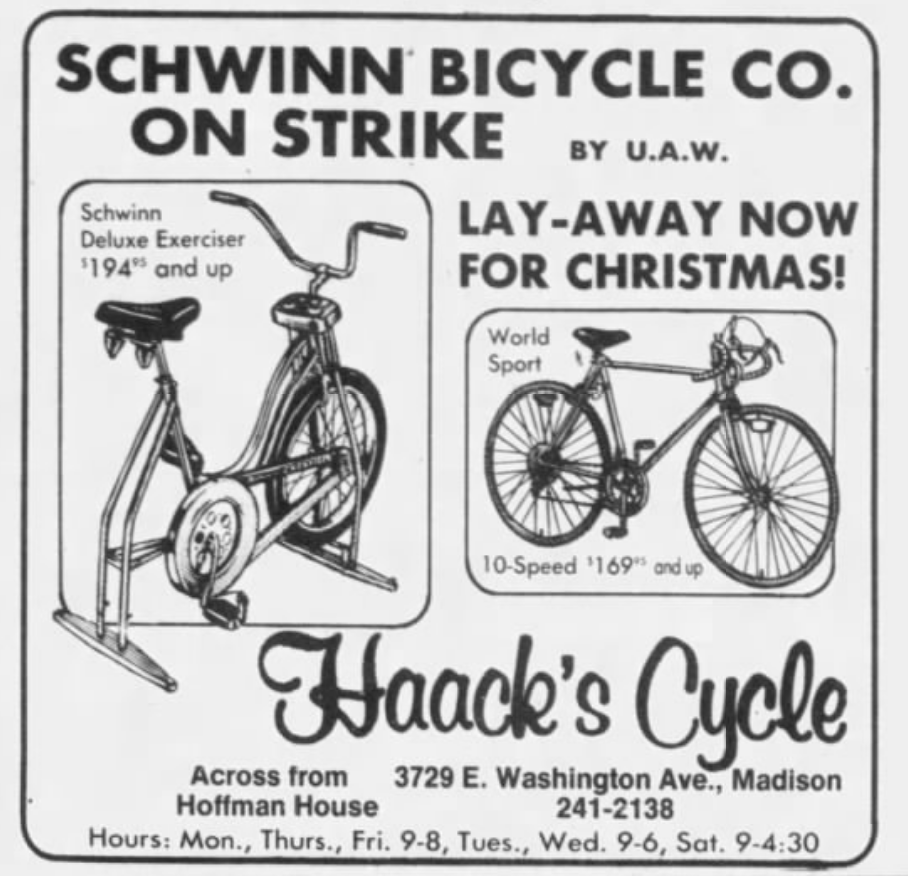
The bicycle would eventually come to be known as a paperboy bike or cruiser.

to make 2.125-inch-wide (54.0 mm) balloon tires, while adding streamlined fenders, an imitation "gas tank", a streamlined, chrome-plated headlight, and a push-button bicycle bell. The company revised the model the next year and renamed it the Aerocycle. Schwinn returned to Chicago and in 1933 introduced the Schwinn B-10E Motorbike, actually a youth's bicycle designed to imitate a motorcycle. After traveling to Europe to get ideas, F. Putting all company efforts towards bicycles, he succeeded in developing a low-cost model that brought Schwinn recognition as an innovative company, as well as a product that would continue to sell during the inevitable downturns in business cycles. W." Schwinn, took over day-to-day operations at Schwinn. With no buyers, Excelsior-Henderson motorcycles were discontinued in 1931. (as it remained until 1967) was on the verge of bankruptcy. Schwinn AeroCycle in Longmont Museum & Cultural CenterĪt the close of the 1920s, the stock market crash decimated the American motorcycle industry, taking Excelsior-Henderson with it. In an atmosphere of general decline elsewhere in the industry, Schwinn's new motorcycle division thrived, and by 1928 was in third place behind Indian and Harley-Davidson. He finalized a purchase of Excelsior Company in 1912, and in 1917 added the Henderson Company to form Excelsior-Henderson. Realizing he needed to grow the company, Ignaz Schwinn purchased several smaller bicycle firms, building a modern factory on Chicago's west side to mass-produce bicycles at lower cost. Competition became intense, both for parts suppliers and for contracts from the major department stores, which retailed the majority of bicycles produced in those days.

Many smaller companies were absorbed by larger firms or went bankrupt in Chicago, only twelve bicycle makers remained in business. By 1905, bicycle annual sales had fallen to only 25% of that reached in 1900. The boom in bicycle sales was short-lived, saturating the market years before motor vehicles were common on American streets. Bicycle output in the United States grew to over a million units per year by the turn of the 20th century. Chicago became the center of the American bicycle industry, with thirty factories turning out thousands of bikes every day. Schwinn's new company coincided with a sudden bicycle craze in America. In 1895, with the financial backing of fellow German American Adolph Frederick William Arnold (a meat packer), he founded Arnold, Schwinn & Company. Schwinn emigrated to the United States in 1891. Ignaz Schwinn was born in Hardheim, Baden, Germany, in 1860 and worked on two-wheeled ancestors of the modern bicycle that appeared in 19th century Europe. The classic Schwinn headbadge Founding of Schwinn


 0 kommentar(er)
0 kommentar(er)
